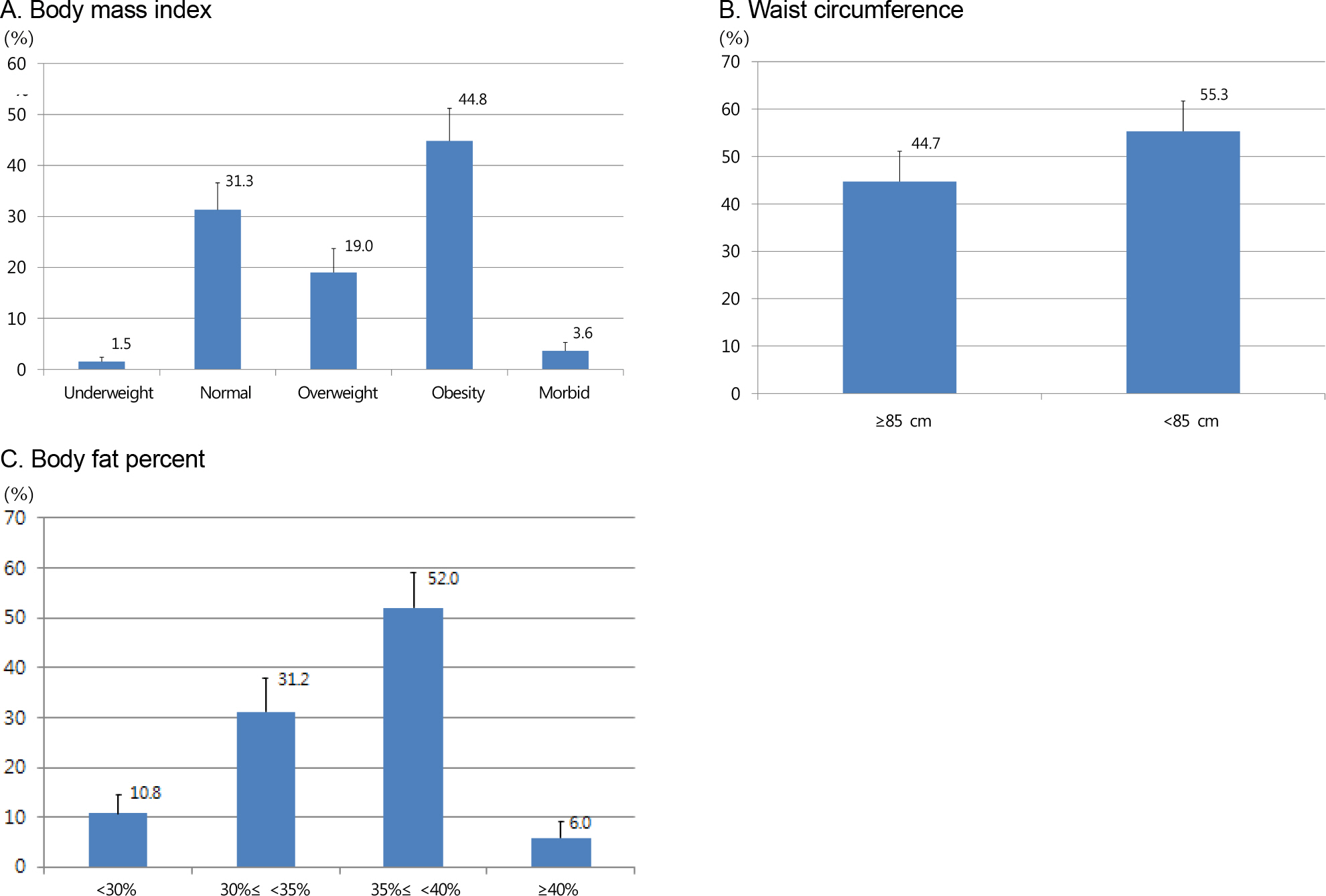References
2. The Korea Central Cancer Registry, National Cancer Center. Annual report of cancer statistics in Korea in 2011. Goyang-si: Ministry of Health and Welfare; 2013. [Accessed Sep 19, 2014].
http://ncc.re.kr/manage/manage03_033_view.jsp?bbsnum=. 295&hSelSearch=&hTxtKeyword=¤t_page=1&cd=null.
3. Protani M, Coory M, Martin JH. Effect of obesity on survival of women with breast cancer: systematic review and metaanalysis. Breast Cancer Res Treat 2010;123(3):627–35.
4. Rock CL, Doyle C, Demark-Wahnefried W, Meyerhardt J, Courneya KS, Schwartz AL, et al. Nutrition and physical activity guidelines for cancer survivors. CA Cancer J Clin 2012;62(4):243–74.
5. Pierce JP, Natarajan L, Caan BJ, Parker BA, Greenberg ER, Flatt SW, et al. Influence of a diet very high in vegetables, fruit, and fiber and low in fat on prognosis following treatment for breast cancer: the women's healthy eating and living (WHEL) randomized trial. JAMA 2007;298(3):289–98.
6. Statistics Korea. National Health and Nutrition Survey 2009. Korea Health Statistics 2009: Korea National Health and Nutrition Examination Survey (KNHANES IV) Reston: Ministry of Health and Welfare; 2009. [Accessed Sep. 19, 2014].
https://knhanes.cdc.go.kr/knhanes/index.do.
7. Deurenberg P, Deurenberg-Yap M, Guricci S. Asians are different from Caucasians and from each other in their body mass in-dex/body fat per cent relationship. Obes Rev 2002;3(3):141–6.
8. Oh JY, Yang YJ, Kim BS, Kang JH. Validity and reliability of Korean version of international physical activity questionnaire (IPAQ) short form. J Korean Acad Fam Med 2007;28(7):532–41.
9. Chlebowski RT, Aiello E, McTiernan A. Weight loss in breast cancer patient management. J Clin Oncol 2002;20(4):1128–43.
10. Courneya K, Karvinen K, Vallance JK. Exercise motivation and behavior change. In : Feuerstein M, ed. Handbook of Cancer Survivorship New York: Springer Science-Business Media LLC; 2006. p. 113–32.
11. Pinto BM, Ciccolo JT. Physical activity motivation and cancer survivorship. Recent Results Cancer Res 2011;186:367–87.
12. Schmitz KH, Courneya KS, Matthews C, Demark-Wahnefried W, Galvão DA, Pinto BM, et al. American college of sports medicine roundtable on exercise guidelines for cancer survivors. Med Sci Sports Exerc 2010;42(7):1409–26.
13. Bae YJ. Evaluation of nutrient and food intake status, and dietary quality in Korean female adults according to obesity: based on 2007–2009 Korean National Health and Nutrition Examination Survey. Korean J Nutr 2012;45(2):140–9.
14. Kang JH, Kim KA, Han JS. Korean diet and obesity. J Korean Soc Study Obes 2004;13(1):34–41.
15. Mosher CE, Sloane R, Morey MC, Snyder DC, Cohen HJ, Miller PE, et al. Associations between lifestyle factors and quality of life among older longterm breast, prostate, and colorectal cancer survivors. Cancer 2009;115(17):4001–9.
16. Zhang Q, Wang Y. Trends in the association between obesity and socioeconomic status in U.S. adults: 1971 to 2000. Obes Res 2004;12(10):1622–32.
17. Lantz PM, House JS, Lepkowski JM, Williams DR, Mero RP, Chen J. Socioeconomic factors, health behaviors, and mortality: results from a nationally representative prospective study of US adults. JAMA 1998;279(21):1703–8.
18. Lampert T. Smoking, physical inactivity, and obesity: associations with social status. Dtsch Arztebl Int 2010;107(1–2):1–7.
19. Na YM, Park HA, Kang JH, Cho YG, Kim KW, Hur YI, et al. Obesity, obesity related disease, and disability. Korean J Fam Med 2011;32(7):412–22.
20. Schwartz MW, Woods SC, Porte D, Seeley RJ, Baskin DG. Central nervous system control of food intake. Nature 2000;404(6778):661–71.
21. Flier JS, Maratos-Flier E. The stomach speaks-ghrelin and weight regulation. N Engl J Med 2002;346(21):1662–3.
22. Park YR, Cho YG, Kang JH, Park HA, Kim KW, Hur YI, et al. Comparison of obesity and overweight prevalence among Korean adults according to community health survey and Korea national health and nutrition examination survey. Korean J Obes 2014;23(1):64–8.
23. Kim KN, Joo NS. Relationship between exercise, body fatness and metabolic syndrome. Korean J Obes 2009;18(4):138–45.




